Use these techniques to help convert and engage customers into repeat purchases and brand advocates across the customer lifecycle
Being a marketer can be exhausting. As if it wasn’t hard enough to attract new customers, now everyone’s talking about optimizing the entire customer lifecycle. (We’re tired just thinking about it!)
If you’re trying to understand customer lifecycle marketing, grab a coffee and read on: we’re here to remedy your marketing overwhelm. In this blog post, we explain why you need to work across the entire customer journey, and how to do it well.
What is customer lifecycle marketing?
Customer lifecycle marketing is about making every touchpoint between a customer and a brand more profitable.
A customer’s lifecycle describes their journey through the buying cycle. It includes every interaction they have with your brand along the way. And covers every marketing channel those interactions happen on.
Creating a customer lifecycle marketing strategy helps you optimize each and every customer interaction. The aim is to build a stronger relationship that will increase revenue.
Stages of customer lifecycle marketing
So, what are the different stages of the customer lifecycle and which tactics are most relevant at each stage?
Attraction
This when your customers discover you. This might be through content marketing, SEO, paid advertising, or social media.
Creating content based on things people are searching for (that relate to your offering) is a great way to get discovered.
If your content meets search intentions well, you will attract organic traffic to your website. Make sure you meet informational needs rather than pushing your product.
Here’s a strong example of attractive content from Airbnb. It meets the needs of people searching for “things to do in Berlin”:
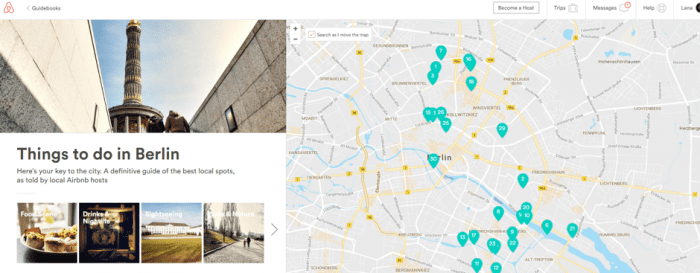
Creating content that’s found through search gets you in front of customers at the beginning of their journey to purchase. When they do start comparing purchase options, you’ll be top of mind.
Consideration
The consideration stage of the customer lifecycle is when customers consider purchase options. You want to get them to form a preference for your brand.
Content types that help include welcome campaigns, ratings and reviews, and product descriptions.
A welcome campaign is an automated series of emails, triggered when someone subscribes. It enables you to position your products in bite-sized chunks and entice your customer to purchase.smart
Here’s a welcome email example from Office that we love. It’s benefit-led, it encourages social engagement, and it introduces popular brands:

Reviews and ratings are another useful tool you can use at the consideration stage. They act as social proof and help customers assess whether a product is a safe choice.
Conversion
Now you need to persuade your customers to purchase from you. Product recommendations, cart abandonment campaigns, and calls-to-action are your tools to do this.
Here’s an example of a tempting cart abandonment email from Kate Spade that would have enticed us back to buy:
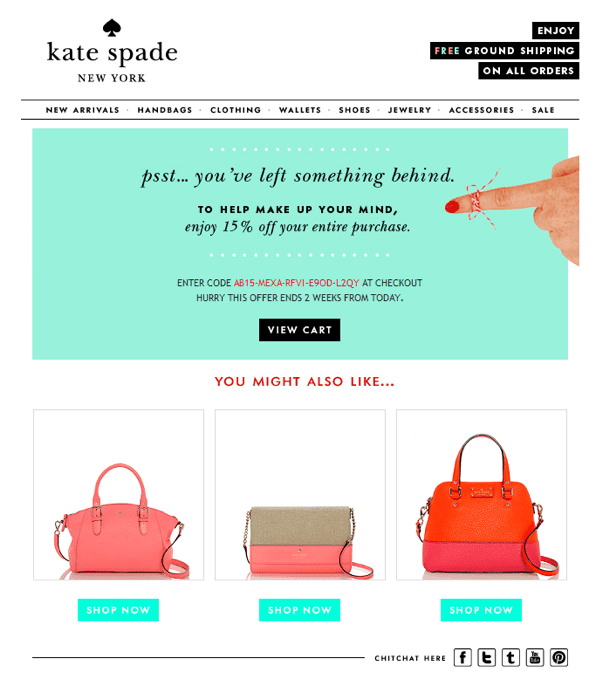
Retention
The retention stage of the customer lifecycle is your chance to build loyalty and retain customers.
Try using loyalty schemes, product recommendations, or VIP discounts at this stage.
Advocacy
The advocacy stage is when you need to put processes in place to convert loyal customers into brand advocates.
Campaigns that encourage the creation of user-generated content on social media channels are great for building advocacy.
Win-back
The win-back stage is when you employ tactics to win back any lapsed customers. Re-engagement email campaigns are an effective way to win-back those sleeping subscribers.
Reminding people what you have to offer is a pragmatic way to approach this. Here’s a great example of this tactic in action from Boden:
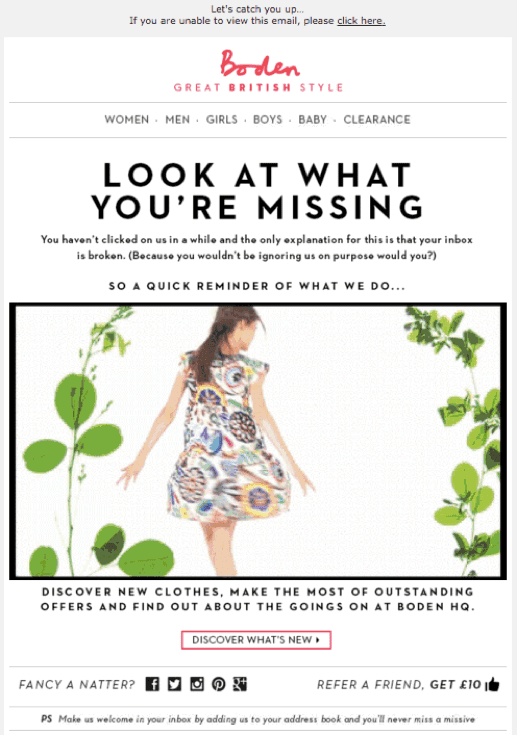
Why does post-purchase marketing matter?
Conversions are not the end of the customer’s lifecycle. They are only the midpoint.
As we’ve explored, after conversion you need to think about retention, advocacy, and win-back tactics to keep your customer relationship profitable.
These tactics help you shape post-purchase behaviour (the way a customer thinks, feels, and acts after they have bought something).
It’s common for customers to feel anxious after a purchase. They’ve just parted with their hard-earned money. Naturally, they question if they spent it well.
Post-purchase marketing is your tool to influence how your customer feels about their purchase. Done well, you can use post-purchase marketing to:
- make customers feel good about their purchase
- increase the likelihood your customer will buy from you again
- turn happy customers into brand advocates
How to win at post-purchase marketing
Email marketing is an ideal post-purchase marketing channel. With the right technology in place, you can set up automated emails that are triggered when a customer buys from you.
Here are some essential post-purchase email marketing ideas to get you started:
Thank you
Thanking your customers for their purchase builds rapport and makes them feel good about what they’ve just bought.
Here’s a bold and simple post-purchase thank you example from Abercrombie & Finch:
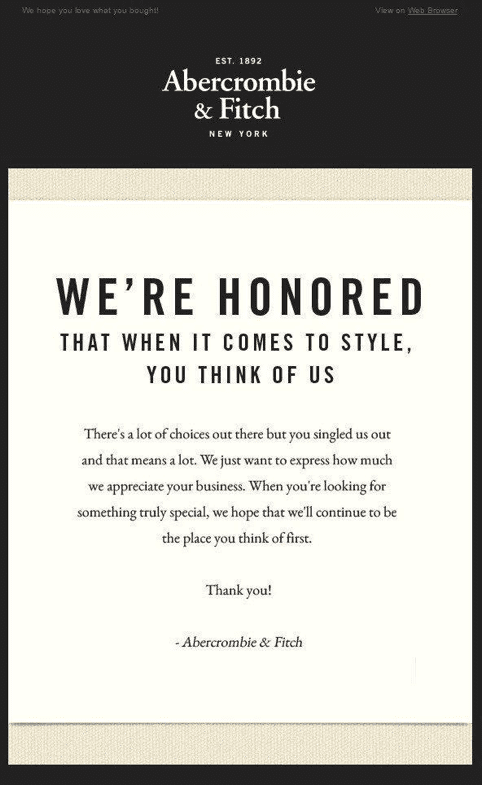
Refund policy and returns
Send an email to remind customers of your refund policy and clearly explain your returns policy. This helps to reduce post-purchase anxiety.
How-to guides
It’s frustrating when you can’t work out how to use something you just bought.
Email a how-to guide to help your customers use their purchase. This will improve their experience and reduces the risk that they’ll regret buying from you.
Product care tips
Some customers worry they’ll have to replace their purchase so soon it won’t be worth the money.
Send a care guide so your customers know how to look after their product. This reassures them it will last for a while and offer good value.
Product recommendations
Email personalized recommendations for complementary products. This helps your customers get the most out of their purchase.
Here’s an example of how to do post-purchase product recommendations well from Best Buy:
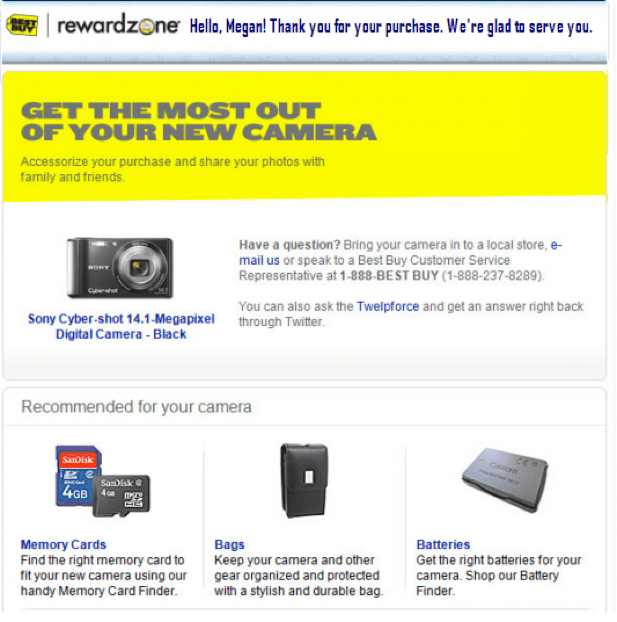
Loyalty programme
Show your customers you value their custom by inviting them to become part of your loyalty programme. This is a great way to encourage frequent purchasing.
Product satisfaction feedback
Asking for feedback helps you improve your customer experience and shows customers you care.
Make sure you time feedback requests well to get the best response rate. This will depend on when the customer will have had a chance to use the product.
Social media and user-generated content
Get customers to post lifestyle snaps of their new purchase to inspire others to buy. This helps you build a bank of user-generated visual content to use for future campaigns.
Refer a friend
Offer your customers the chance to refer a friend in return for a discount. This helps you increase your customer base and boost your revenue.
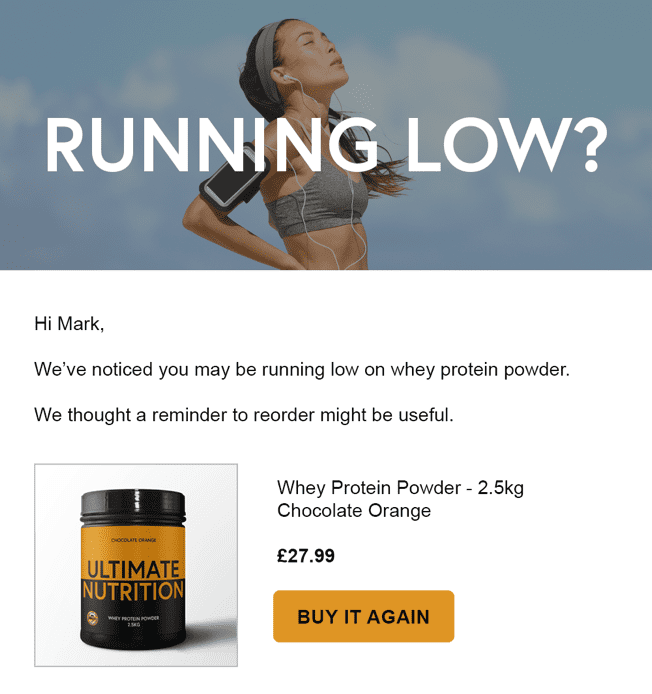
Replenishment
Prompt customers to re-order before their product runs out with an automated replenishment email.
This ensures they aren’t left in the lurch (and that they don’t buy from a competitor).
Learn more by reading Pure360’s best practice guide to post-purchase marketing.
Takeaway
We hope this post has helped you learn about customer lifecycle marketing and given you some ideas to play with.
To implement the strategies we’ve explored, you’ll need the right marketing automation technology in place. That’s where we come in.
Thanks to Lana Burgess for sharing their advice and opinion in this post. Lana is a content marketing consultant for
Pure360. Pure360’s technology helps 1000s of brands manage their customer lifecycles more effectively.
Learn more about Pure360's products.













